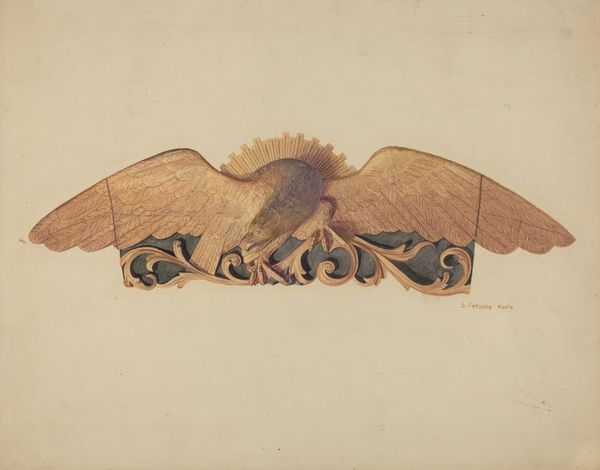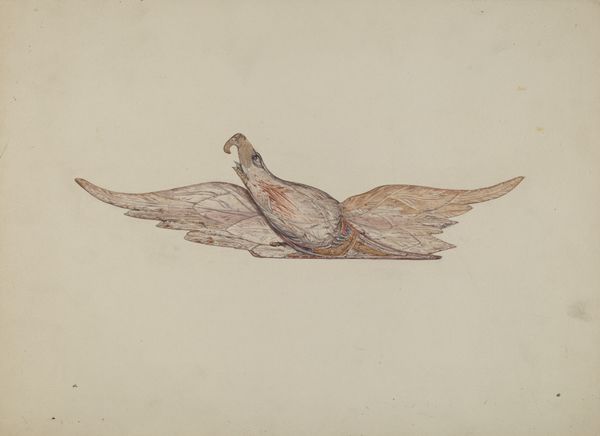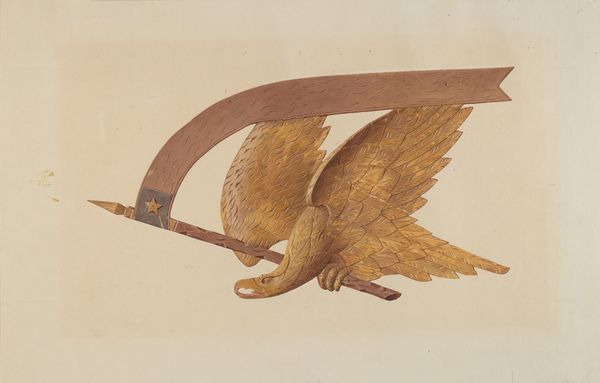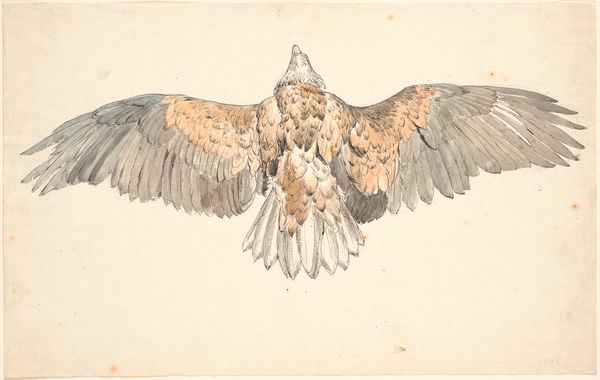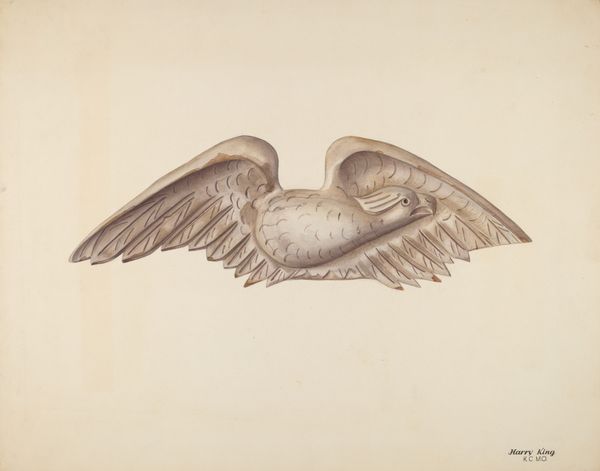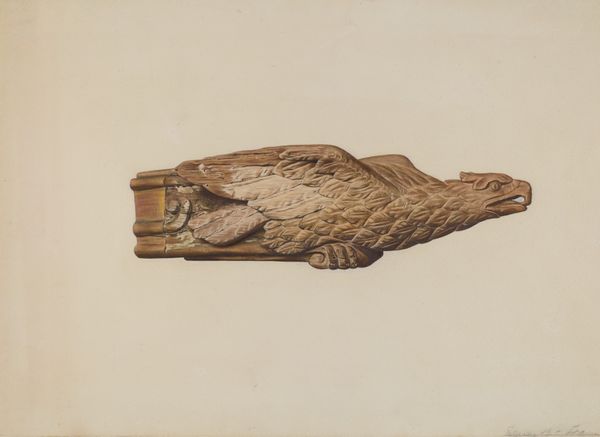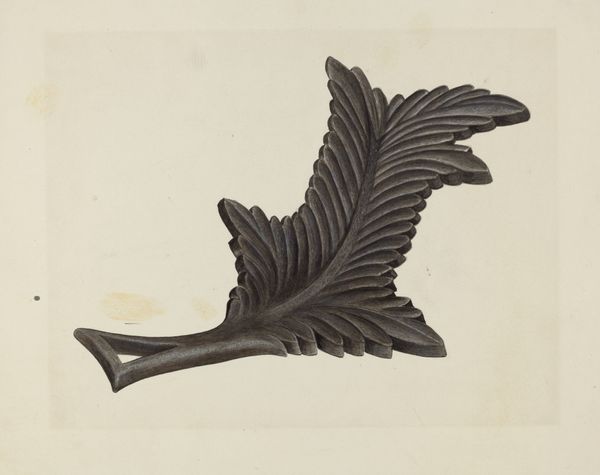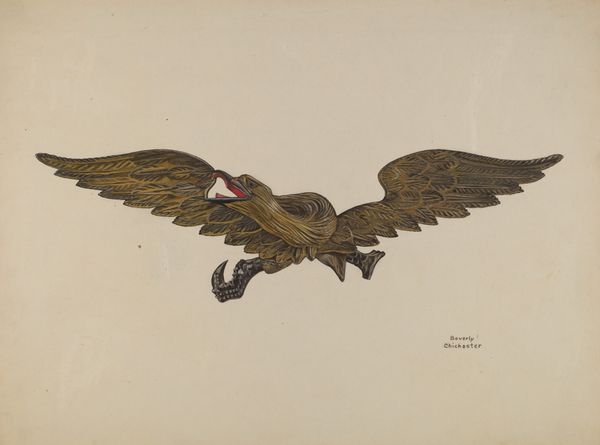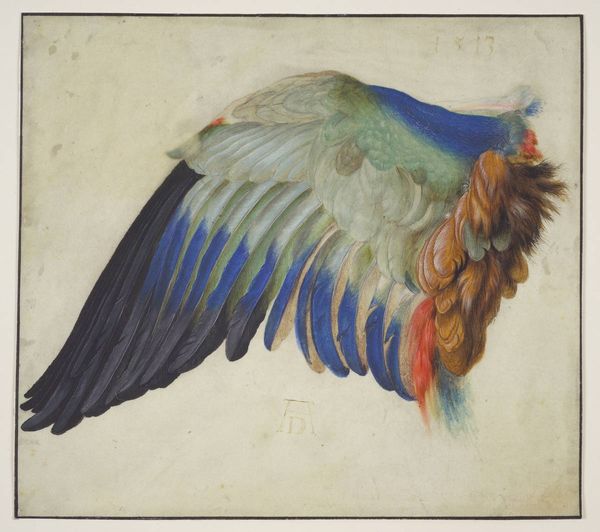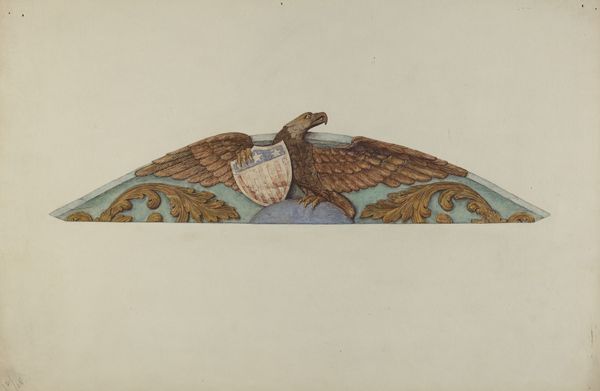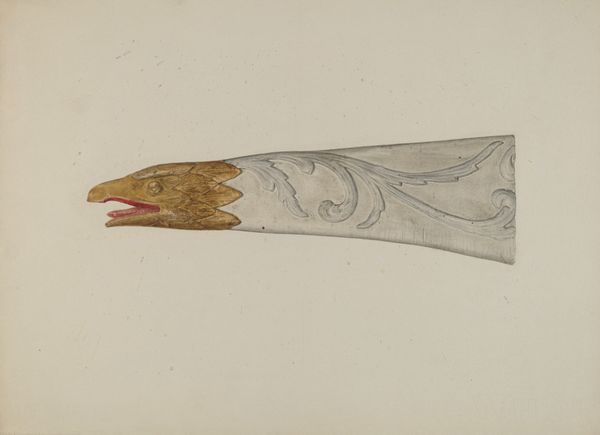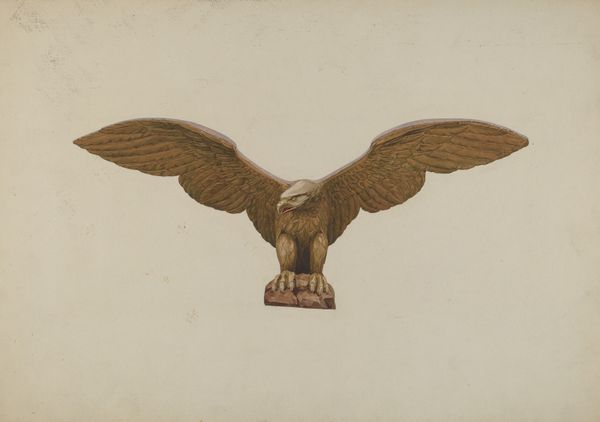
drawing, carving, watercolor, wood
#
drawing
#
carving
#
watercolor
#
pencil drawing
#
wood
#
watercolour illustration
#
watercolor
Dimensions: overall: 40.5 x 55.7 cm (15 15/16 x 21 15/16 in.) Original IAD Object: 30" long; 9" wide
Copyright: National Gallery of Art: CC0 1.0
Curator: Here we have Gerard Barnett's "Woodcarving - Wing", created around 1939. It appears to be a depiction combining watercolor and drawing. Editor: It strikes me immediately as rather elegant, almost archaic, despite the apparent fragility implied by those cracks depicted on the wing's surface. The muted color palette lends it a certain timelessness. Curator: I find that interesting, particularly when considered in its historical context. Carved wood, especially with that curling hook feature, would likely have been used in many Indigenous cultures for religious symbolism. And here Barnett has carefully, and faithfully, represented that tradition with great artistic sensitivity. Editor: Indeed, but if we focus on the forms, observe how the rhythmic arrangement of the wing's feathers creates a visual harmony. It's more than just representation; it’s a sophisticated play with line and shadow that transcends its subject matter. I might even suggest that there are some surreal undertones at play in the juxtaposition of materials: The illusionistic combination of watercolours and carvings, playing on both the literal and representational forms. Curator: I do see your point about the play between real and represented, but it seems that the use of watercolor and pencil serves not just the artist’s personal aesthetic, but the socio-political purpose of cultural preservation. At this moment in history, such depictions played a vital role in recording traditional woodcarving, particularly for future generations unfamiliar with its function and significance. Editor: I concede your reading gives the piece greater depth, especially thinking about preservation of cultural knowledge through this work. The choice of rendering it in such muted, naturalistic tones—like aged parchment almost—feels quite purposeful now. Curator: Precisely. It gives us pause to think about the journey this kind of art undertook during Barnett's lifetime, in and out of colonial collecting and exhibition contexts. Editor: Well, now that you've highlighted it, seeing it through that lens makes a great difference for me; thinking about the artistic composition together with the greater circumstances helps provide context. It's a testament to art's enduring role as a bridge across cultures and time.
Comments
No comments
Be the first to comment and join the conversation on the ultimate creative platform.
